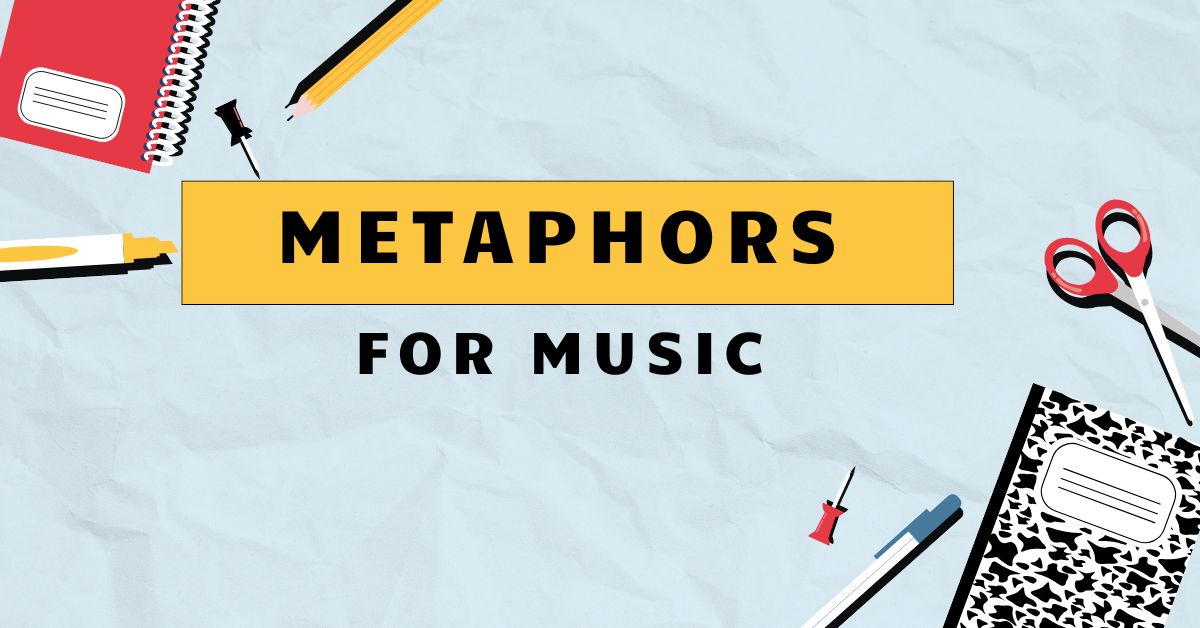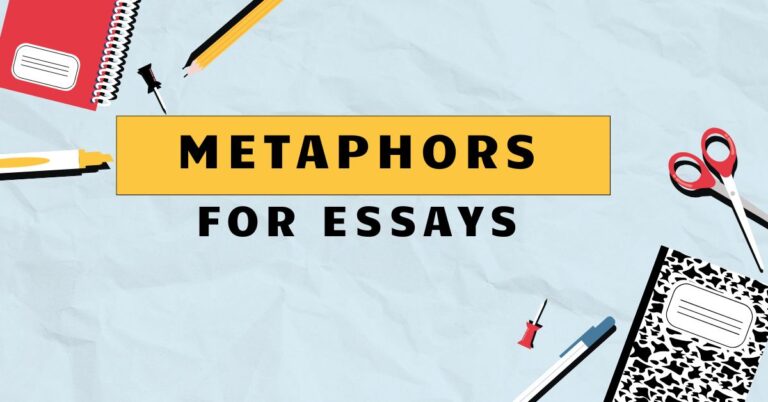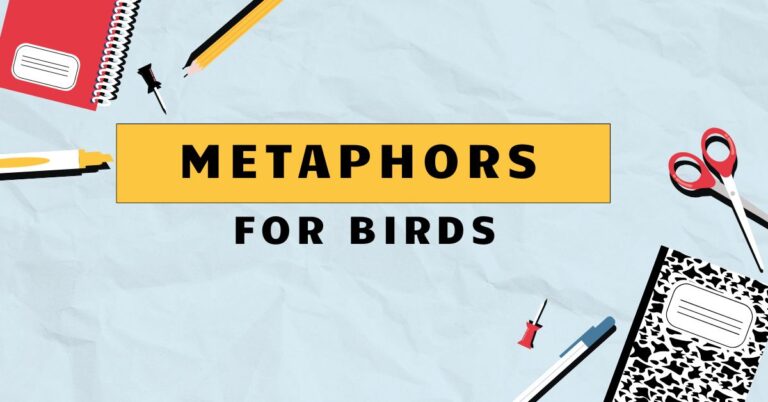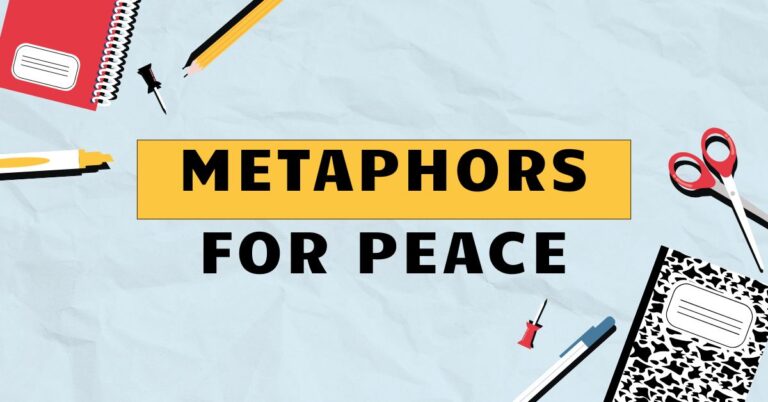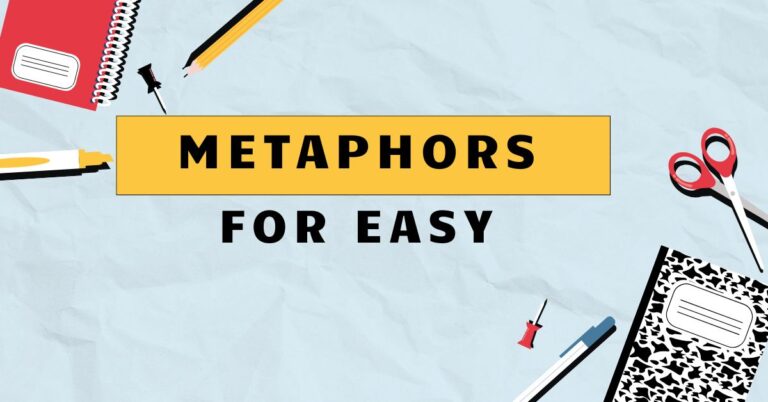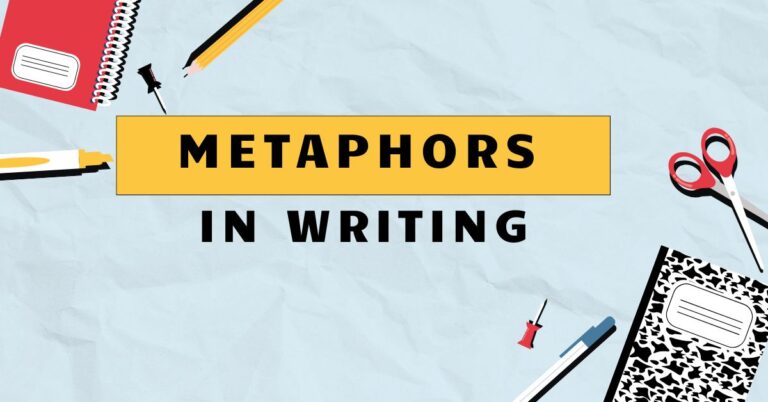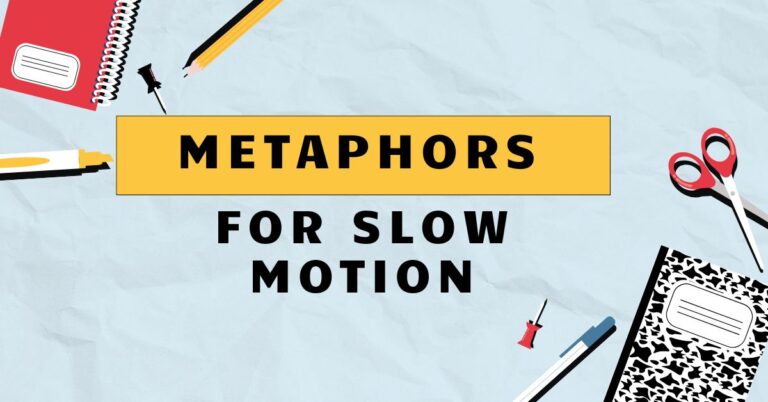43 Metaphors for Music: A Comprehensive Guide
Music, an abstract art form, often transcends literal description. To truly capture its essence, power, and emotional depth, we frequently turn to metaphors.
Understanding metaphors for music enhances our ability to analyze, appreciate, and discuss musical works. This guide is essential for music students, writers, and anyone seeking a deeper connection with the art of sound.
By exploring these figurative expressions, we unlock new levels of insight into the artistry and impact of music.
Table of Contents
- Introduction
- Definition of Metaphor for Music
- Structural Breakdown of Music Metaphors
- Types of Metaphors Used for Music
- Examples of Metaphors for Music
- Usage Rules for Metaphors in Music Writing
- Common Mistakes When Using Music Metaphors
- Practice Exercises
- Advanced Topics in Music Metaphors
- FAQ: Metaphors for Music
- Conclusion
Definition of Metaphor for Music
A metaphor for music is a figure of speech that describes music by comparing it to something else, without using “like” or “as.” It transfers qualities or characteristics from one thing to another to create a vivid and insightful image of the music’s nature. These metaphors function to help listeners and readers understand the emotional impact, structural elements, or overall aesthetic of a piece of music in a non-literal, often poetic way.
Metaphors are crucial for conveying complex emotions and abstract ideas associated with music. Because music is inherently non-representational, metaphors provide a bridge between the auditory experience and our comprehension.
They enrich our understanding and appreciation of music by evoking sensory and emotional connections.
The context in which a metaphor is used significantly affects its meaning. The same metaphor might have different connotations depending on the musical genre, cultural background, or the specific aspect of the music being discussed.
The effectiveness of a metaphor depends on its ability to resonate with the audience and enhance their perception of the music.
Structural Breakdown of Music Metaphors
Music metaphors typically consist of two main elements: thetenorand thevehicle. The tenor is the subject being described (in this case, music or a specific aspect of it), and the vehicle is the object or concept to which the music is being compared.
The connection between the tenor and the vehicle creates the metaphorical meaning.
Understanding the relationship between the tenor and the vehicle is essential for interpreting the metaphor correctly. For example, when describing a melody as a “winding river,” the melody (tenor) is being compared to a river (vehicle).
The shared characteristics, such as flow, direction, and curves, create the metaphorical meaning.
The effectiveness of a music metaphor also depends on itsoriginalityandrelevance. A fresh and imaginative metaphor can provide a unique perspective on the music, while a relevant metaphor accurately reflects the music’s qualities.
Clichéd or irrelevant metaphors can weaken the description and fail to enhance the understanding of the music.
Types of Metaphors Used for Music
Synesthetic Metaphors
Synesthetic metaphors blend different senses to describe music. They often involve associating sound with visual, tactile, or olfactory sensations.
These metaphors can create a richer and more immersive experience for the listener or reader. For example, describing music as “warm” (temperature) or “bright” (visual) are synesthetic metaphors.
Emotional Metaphors
Emotional metaphors convey the feelings and emotions evoked by music. They describe music in terms of human emotions, such as joy, sorrow, anger, or peace.
These metaphors help listeners connect with the emotional content of the music. Examples include describing a piece as “heartbreaking” or “triumphant.”
Kinesthetic Metaphors
Kinesthetic metaphors relate music to movement and physical sensations. They describe music in terms of motion, energy, and physical actions.
These metaphors can convey the dynamic and rhythmic aspects of music. Examples include describing a rhythm as “driving” or a melody as “soaring.”
Spatial Metaphors
Spatial metaphors use spatial relationships and dimensions to describe music. They describe music in terms of height, depth, distance, and direction.
These metaphors can help listeners visualize the structure and texture of the music. Examples include describing a harmony as “deep” or a melody as “high.”
Nature Metaphors
Nature metaphors compare music to elements of the natural world, such as landscapes, weather, or animals. These metaphors can evoke a sense of beauty, power, or tranquility.
Examples include describing music as “a gentle breeze” or “a raging storm.”
Examples of Metaphors for Music
The following tables provide examples of metaphors for music, categorized by type. Each example includes the metaphor itself and a brief explanation of its meaning.
Table 1: Synesthetic Metaphors for Music
This table presents examples of synesthetic metaphors used to describe music. Synesthetic metaphors blend different senses to create a more vivid and immersive experience.
| Metaphor | Explanation |
|---|---|
| The music was a warm bath for the soul. | Compares the music to a comforting and soothing tactile sensation. |
| Her voice was golden. | Associates the voice with the visual quality of gold, suggesting richness and beauty. |
| The melody was bitter. | Describes the melody with a taste sensation, implying a sense of sadness or regret. |
| The harmony was bright. | Associates the harmony with the visual quality of brightness, suggesting joy and optimism. |
| The song had a velvety texture. | Compares the song to the tactile sensation of velvet, suggesting smoothness and richness. |
| The music tasted like sunshine. | A synesthetic metaphor linking the auditory experience of music with the warmth and joy associated with sunshine, suggesting a cheerful and uplifting quality. |
| His guitar solo was electric. | This metaphor connects the auditory experience of the guitar solo with the sensation of electricity, implying energy, excitement, and intensity. |
| The singer’s voice was silky. | Compares the smoothness and elegance of the singer’s voice to the tactile sensation of silk, suggesting grace and refinement. |
| The bass line was thick and heavy. | This metaphor uses a tactile sense to describe the depth and weight of the bass line, conveying a sense of power and substantiality. |
| The music smelled like rain on dry earth. | An evocative synesthetic metaphor that combines the auditory experience of music with the refreshing and cleansing scent of rain, suggesting renewal and rejuvenation. |
| The composition had a sharp, angular sound. | This metaphor uses a tactile sense to describe the clarity and precision of the composition, implying a sense of focus and sharpness. |
| The choir’s voices were creamy and blended perfectly. | Compares the smooth and harmonious blend of the choir’s voices to the rich and luxurious texture of cream, suggesting unity and beauty. |
| The music felt like a cool breeze on a hot day. | A synesthetic metaphor that links the auditory experience of music with the refreshing and soothing sensation of a cool breeze, suggesting relief and comfort. |
| The piano chords were icy and dissonant. | This metaphor connects the auditory experience of the piano chords with the cold and unsettling sensation of ice, implying tension and unease. |
| The melody was sweet and nostalgic. | Compares the pleasant and sentimental quality of the melody to the taste of sweetness, suggesting fond memories and gentle emotions. |
| The drummer laid down a solid foundation for the song. | Uses a tactile sense to describe the reliability and strength of the drummer’s rhythm, conveying a sense of stability and support. |
| The trumpet’s high notes were blinding. | This metaphor links the auditory experience of the trumpet’s high notes with the intensity of bright light, suggesting brilliance and power. |
| The music had a tangy, vibrant energy. | Compares the lively and invigorating quality of the music to the taste of something tangy, suggesting excitement and vitality. |
| The song was like a warm hug. | A synesthetic metaphor that links the auditory experience of the song with the comforting and affectionate sensation of a warm hug, suggesting love and support. |
| The orchestra’s sound was incredibly lush. | Compares the richness and fullness of the orchestra’s sound to a visual sense of abundance and vibrancy, suggesting a full and complex texture. |
| The music felt like a gentle caress. | Links the auditory experience with a soft, tender touch, suggesting intimacy and affection. |
| The song was a soothing balm for the soul. | Compares the calming and healing effect of the song to the therapeutic sensation of a soothing balm, suggesting comfort and restoration. |
| The singer’s voice was like molten gold. | Links the auditory experience of the voice with the visual and tactile qualities of molten gold, suggesting both beauty and fluidity. |
Table 2: Emotional Metaphors for Music
This table illustrates emotional metaphors, which describe music in terms of human feelings and emotions.
| Metaphor | Explanation |
|---|---|
| The music was a sigh of relief. | Compares the music to the feeling of relief, suggesting a sense of release and comfort. |
| The song was a heartbreak in musical form. | Describes the song as expressing intense sadness and emotional pain. |
| The music was a celebration of life. | Compares the music to a joyous celebration, suggesting happiness and gratitude. |
| The melody was a whisper of hope. | Describes the melody as expressing a faint but persistent feeling of optimism. |
| The music was a rage against injustice. | Compares the music to the feeling of anger and protest against unfairness. |
| The song was a triumphant anthem. | Suggests the music is victorious and celebratory, like a national anthem. |
| The music was a lullaby for the weary. | Implies the music is soothing and comforting, like a song meant to help someone sleep. |
| The melody was a cry for help. | Describes the melody as expressing desperation and a need for assistance. |
| The music was a dance of joy. | Compares the music to a joyous dance, suggesting happiness and celebration. |
| The song was a funeral dirge. | Implies the music is mournful and somber, like a song played at a funeral. |
| The music was a wave of nostalgia. | Suggests the music evokes a strong feeling of longing for the past. |
| The melody was a sigh of longing. | Describes the melody as expressing a deep desire for something unattainable. |
| The music was a roar of defiance. | Compares the music to a loud and forceful expression of resistance. |
| The song was a promise of love. | Implies the music expresses a commitment to affection and devotion. |
| The music was a prayer for peace. | Suggests the music is a plea for tranquility and harmony. |
| The melody was a song of freedom. | Describes the melody as expressing liberation and independence. |
| The music was a tapestry of emotions. | Compares the music to a complex and intricate display of various feelings. |
| The song was a reflection of sorrow. | Implies the music expresses deep sadness and grief. |
| The music was an ode to happiness. | Suggests the music is a celebratory expression of joy and contentment. |
| The melody was a voice of resilience. | Describes the melody as expressing strength and perseverance in the face of adversity. |
| The song felt like a gentle embrace from an old friend. | Implies the music offers comfort and warmth, reminiscent of a close, familiar bond. |
| The music was a torrent of passion. | Suggests the music is intensely emotional and overflowing with fervor. |
| The melody was a beacon of hope in dark times. | Describes the melody as a source of optimism and guidance during difficult periods. |
Table 3: Kinesthetic Metaphors for Music
This table showcases kinesthetic metaphors, which relate music to movement and physical sensations.
| Metaphor | Explanation |
|---|---|
| The rhythm was a driving force. | Compares the rhythm to a powerful force that propels the music forward. |
| The melody danced across the scales. | Describes the melody as moving gracefully and playfully. |
| The music flowed like a river. | Compares the music to the smooth and continuous movement of a river. |
| The harmony swirled around the melody. | Describes the harmony as moving in a circular and enveloping manner. |
| The music pulsated with energy. | Compares the music to a rhythmic and vibrant heartbeat. |
| The beat was a steady march. | Implies a consistent and unwavering rhythm. |
| The music soared to new heights. | Suggests the music is ascending and reaching a peak. |
| The rhythm galloped forward. | Describes the rhythm as moving quickly and energetically. |
| The music glided effortlessly. | Compares the music to a smooth and graceful movement. |
| The melody leapt and bounded. | Describes the melody as moving in a lively and energetic manner. |
| The music surged with power. | Suggests a sudden and strong increase in energy and intensity. |
| The rhythm tumbled and rolled. | Describes the rhythm as moving in a chaotic and unpredictable manner. |
| The music climbed towards a crescendo. | Compares the music to a gradual ascent to a peak of intensity. |
| The melody spiraled upwards. | Describes the melody as moving in a winding and ascending manner. |
| The music swept the audience away. | Suggests a powerful and overwhelming emotional impact. |
| The rhythm staggered and stumbled. | Describes the rhythm as moving unevenly and uncertainly. |
| The music lunged forward with force. | Compares the music to a sudden and aggressive movement. |
| The melody wandered aimlessly. | Describes the melody as moving without a clear direction or purpose. |
| The music drifted gently along. | Compares the music to a slow and peaceful movement. |
| The rhythm propelled the song forward. | Suggests the rhythm is driving and energetic, pushing the song ahead. |
| The music rippled through the air. | Suggests a spreading and flowing movement, like waves expanding. |
| The notes cascaded down the scale. | Compares the notes to a waterfall, suggesting a flowing and abundant movement. |
| The song marched steadily towards its conclusion. | Implies a purposeful and unwavering progression to the end. |
Table 4: Spatial Metaphors for Music
This table provides examples of spatial metaphors, which use spatial relationships and dimensions to describe music.
| Metaphor | Explanation |
|---|---|
| The harmony was deep and resonant. | Describes the harmony as having a rich and profound sound. |
| The melody was high and clear. | Describes the melody as having a bright and prominent sound. |
| The music had a wide dynamic range. | Compares the music’s volume range to a broad expanse. |
| The song had a narrow emotional scope. | Compares the song’s emotional range to a limited space. |
| The music was layered with textures. | Describes the music as having multiple levels of sound. |
| The melody was in the foreground. | Implies the melody is prominent and easily heard. |
| The harmony was in the background. | Suggests the harmony is subtle and supportive. |
| The music had a dense orchestration. | Describes the music as having a thick and complex arrangement. |
| The song had a sparse arrangement. | Implies the song has a simple and uncluttered arrangement. |
| The music had a broad emotional landscape. | Compares the music’s emotional range to a vast and varied terrain. |
| The music had a towering presence. | Suggests the music is imposing and dominant. |
| The melody was a guiding star. | Implies the melody is a beacon of direction and inspiration. |
| The music was a vast ocean of sound. | Compares the music to a boundless and immersive expanse. |
| The song had a confined emotional space. | Suggests the song has a limited and restrictive emotional range. |
| The music had a distant and ethereal quality. | Implies the music is remote and otherworldly. |
| The melody was etched in the listener’s mind. | Compares the melody to something permanently imprinted in memory. |
| The music had a panoramic scope. | Suggests the music encompasses a wide and comprehensive range. |
| The song had a shallow emotional depth. | Implies the song lacks profound emotional resonance. |
| The music had a lofty and majestic sound. | Suggests the music is elevated and grand. |
| The melody was a bridge between cultures. | Compares the melody to a connection that links different societies. |
| The music created a sense of space. | Implies the music evokes a feeling of openness and freedom. |
| The song felt like a journey. | Compares the experience of listening to the song to a voyage or expedition. |
| The composition had a three-dimensional depth. | Suggests the music has a complex and multifaceted structure. |
Table 5: Nature Metaphors for Music
This table showcases nature metaphors, which compare music to elements of the natural world.
| Metaphor | Explanation |
|---|---|
| The music was a gentle breeze. | Compares the music to a soft and soothing wind. |
| The song was a raging storm. | Compares the song to a violent and turbulent weather event. |
| The music was a babbling brook. | Compares the music to a clear and flowing stream. |
| The melody was a birdsong. | Compares the melody to the sweet and natural sounds of birds. |
| The music was a rolling thunder. | Compares the music to a deep and resonant sound of thunder. |
| The song was a forest of sound. | Suggests a dense and complex collection of sounds, like the diversity of a forest. |
| The music was a sunrise of hope. | Compares the music to the bright and optimistic beginning of a new day. |
| The melody was a moonbeam in the night. | Implies a gentle and illuminating presence in a dark setting. |
| The music was a mountain of sound. | Suggests a towering and imposing presence. |
| The song was an echo in the valley. | Compares the song to a lingering and resonant sound in a natural setting. |
| The music was a desert of silence. | Suggests a barren and empty soundscape. |
| The melody was a flower in bloom. | Implies a beautiful and flourishing presence. |
| The music was a tidal wave of emotion. | Compares the music to a powerful and overwhelming surge. |
| The song was a campfire in the darkness. | Suggests a source of warmth and comfort in a bleak setting. |
| The music was a rainbow after the rain. | Compares the music to a colorful and hopeful sign after a difficult time. |
| The melody was a whispering wind. | Implies a soft and subtle presence. |
| The music was a starry night. | Suggests a vast and beautiful expanse. |
| The song was a rolling hill of sound. | Compares the song to a gentle and undulating landscape. |
| The music was a flowing river of melody. | Implies a continuous and dynamic movement. |
| The melody was a lone tree in the field. | Suggests a solitary and striking presence. |
| The music felt like a walk in a spring garden. | Compares the experience of listening to the music to the sensory richness of a blooming garden. |
| The song was as unpredictable as a forest fire. | Suggests a destructive and rapidly changing nature. |
| The harmony was as soothing as a calm sea. | Implies tranquility and peace. |
Usage Rules for Metaphors in Music Writing
When using metaphors for music, it’s essential to follow certain guidelines to ensure clarity, relevance, and effectiveness. A well-chosen metaphor can enhance the reader’s understanding and appreciation of the music, while a poorly chosen metaphor can confuse or distract.
Relevance:Ensure the metaphor is relevant to the music being described. The shared characteristics between the tenor and the vehicle should be clear and meaningful.
Avoid using metaphors that are too abstract or unrelated to the music’s qualities.
Originality:Strive for originality in your metaphors. Avoid clichés and overused expressions.
A fresh and imaginative metaphor can provide a unique perspective on the music and capture the reader’s attention.
Clarity:Make sure the metaphor is clear and easy to understand. Avoid using metaphors that are too complex or obscure.
The reader should be able to grasp the connection between the tenor and the vehicle without difficulty.
Consistency:Maintain consistency in your use of metaphors. Avoid mixing metaphors that clash or create confusing images.
Choose a central metaphor and develop it throughout your description.
Context:Consider the context in which the metaphor is being used. The same metaphor might have different connotations depending on the musical genre, cultural background, or the specific aspect of the music being discussed.
Tailor your metaphors to suit the context.
Common Mistakes When Using Music Metaphors
Several common mistakes can undermine the effectiveness of music metaphors. Being aware of these pitfalls can help you avoid them and create more compelling descriptions.
Clichés: Using overused and predictable metaphors can make your writing seem uninspired. Examples include “the music was like a breath of fresh air” or “the song was as sweet as honey.” Instead, strive for fresh and original expressions.
Mixed Metaphors: Combining metaphors that don’t logically fit together can create confusing and nonsensical images. For instance, “the music was a raging storm that whispered softly” is a mixed metaphor because storms don’t whisper.
Irrelevant Metaphors: Using metaphors that have no clear connection to the music being described can confuse the reader. For example, comparing a somber piece of classical music to a “rollercoaster ride” is irrelevant because it doesn’t capture the music’s emotional tone.
Overly Complex Metaphors: Using metaphors that are too complicated or obscure can make your writing difficult to understand. The reader should be able to grasp the connection between the tenor and the vehicle without struggling.
Inconsistent Tone: Using metaphors that don’t align with the overall tone of your writing can create a jarring effect. For example, using a humorous metaphor to describe a serious and emotional piece of music would be inappropriate.
Below are some examples of common mistakes related to metaphors. Each example includes the incorrect usage, and a correction.
| Incorrect Usage | Corrected Usage |
|---|---|
| The music was a breath of fresh air, a rollercoaster ride of emotions. | The music was a breath of fresh air, invigorating and revitalizing. |
| The song was as sweet as honey, a bitter pill to swallow. | The song was as sweet as honey, a comforting and delightful experience. |
| The melody danced like a butterfly but hit like a truck. | The melody danced like a butterfly, light and graceful. |
| The harmony was a deep ocean, yet shallow in meaning. | The harmony was a deep ocean, full of mystery and complexity. |
| The music was a raging storm, a gentle caress. | The music was a raging storm, powerful and overwhelming. |
Practice Exercises
These exercises will help you practice identifying and using metaphors for music. Each exercise includes a set of questions and answers.
Exercise 1: Identifying Metaphors
Identify the metaphor in each sentence and explain its meaning.
| Question | Answer |
|---|---|
| 1. The music was a tapestry of sound. | Metaphor: Tapestry. Meaning: The music is complex and intricately woven together. |
| 2. Her voice was a silver bell. | Metaphor: Silver bell. Meaning: Her voice is clear, pure, and beautiful. |
| 3. The rhythm was the heartbeat of the song. | Metaphor: Heartbeat. Meaning: The rhythm is the essential and driving force of the song. |
| 4. The melody was a winding road. | Metaphor: Winding road. Meaning: The melody is complex and takes unexpected turns. |
| 5. The music was a river of emotions. | Metaphor: River. Meaning: The music is flowing and full of feeling. |
| 6. The chords were a solid foundation. | Metaphor: Solid foundation. Meaning: The chords are stable and supportive. |
| 7. The song was a beacon of hope. | Metaphor: Beacon. Meaning: The song provides guidance and optimism. |
| 8. The music was a kaleidoscope of colors. | Metaphor: Kaleidoscope. Meaning: The music is varied and visually stimulating. |
| 9. The melody was a sweet caress. | Metaphor: Sweet caress. Meaning: The melody is gentle and comforting. |
| 10. The music was a bridge between cultures. | Metaphor: Bridge. Meaning: The music connects different societies and traditions. |
Exercise 2: Creating Metaphors
Create a metaphor for each musical element described below.
| Question | Answer (Example) |
|---|---|
| 1. A loud and powerful orchestral climax. | A volcanic eruption of sound. |
| 2. A soft and gentle piano melody. | A whisper of moonlight. |
| 3. A fast and energetic drum solo. | A lightning storm of rhythm. |
| 4. A complex and intricate vocal harmony. | A woven tapestry of voices. |
| 5. A slow and mournful cello solo. | A weeping willow in the wind. |
| 6. A repetitive and hypnotic bass line. | A steady, throbbing pulse. |
| 7. A sudden and unexpected chord change. | A sharp turn on a winding road. |
| 8. A gradual increase in volume and intensity. | A slow climb to the summit. |
| 9. A quiet and peaceful musical interlude. | A serene oasis in the desert. |
| 10. A soaring and uplifting choral arrangement. | A flock of birds taking flight. |
Exercise 3: Correcting Metaphors
Identify and correct the mixed or inappropriate metaphors in the following sentences.
| Question | Answer |
|---|---|
| 1. The music was a raging storm that whispered softly. | Corrected: The music was a raging storm, powerful and overwhelming. |
| 2. The song was as sweet as honey, a bitter pill to swallow. | Corrected: The song was as sweet as honey, a comforting and delightful experience. |
| 3. The melody danced like a butterfly but hit like a truck. | Corrected: The melody danced like a butterfly, light and graceful. |
| 4. The harmony was a deep ocean, yet shallow in meaning. | Corrected: The harmony was a deep ocean, full of mystery and complexity. |
| 5. The music was a breath of fresh air, a rollercoaster ride of emotions. | Corrected: The music was a breath of fresh air, invigorating and revitalizing. |
| 6. The rhythm was a steady march that exploded like fireworks. | Corrected: The rhythm was a steady march, resolute and unwavering. |
| 7. The song was a tapestry of sound, yet as clear as
a bell. |
Corrected: The song was a tapestry of sound, rich and intricately woven. |
| 8. The melody was a winding road that flew like an arrow. | Corrected: The melody was a winding road, full of unexpected twists and turns. |
| 9. The music was a river of emotions, yet dry and lifeless. | Corrected: The music was a river of emotions, flowing and full of feeling. |
| 10. The chords were a solid foundation that crumbled like sand. | Corrected: The chords were a solid foundation, strong and supportive. |
Advanced Topics in Music Metaphors
For those looking to deepen their understanding of music metaphors, several advanced topics can provide further insight and nuance. These topics explore the cultural, historical, and theoretical dimensions of metaphorical language in music.
Cultural Context of Music Metaphors
Metaphors are often culturally specific, reflecting the values, beliefs, and experiences of a particular society. Understanding the cultural context of a metaphor is essential for interpreting its meaning accurately.
For example, metaphors related to nature may have different connotations in agrarian societies compared to urban societies.
Historical Evolution of Music Metaphors
The use of metaphors in music writing has evolved over time, influenced by changing aesthetic values and intellectual trends. Studying the historical evolution of music metaphors can provide insights into the shifting perspectives on music and its role in society.
For example, the Romantic era saw a rise in emotional and expressive metaphors for music.
Theoretical Frameworks for Music Metaphors
Various theoretical frameworks, such as cognitive linguistics and semiotics, can be applied to the study of music metaphors. These frameworks provide tools for analyzing the structure, function, and meaning of metaphors in a systematic way.
For example, cognitive linguistics explores how metaphors shape our understanding of abstract concepts like music.
Interdisciplinary Approaches to Music Metaphors
Music metaphors can be studied from an interdisciplinary perspective, drawing on insights from fields such as literature, psychology, and anthropology. These approaches can reveal the complex ways in which metaphors connect music to other aspects of human experience.
For example, literary theory can provide tools for analyzing the narrative structure of musical metaphors.
FAQ: Metaphors for Music
Conclusion
Metaphors are powerful tools for describing and understanding music. By comparing music to other concepts, we can convey its emotional impact, structural elements, and overall aesthetic in a vivid and insightful way.
Understanding the different types of metaphors, following usage rules, and avoiding common mistakes can help you create more compelling and effective descriptions of music. As you continue to explore the world of music, embrace the power of metaphors to unlock new levels of insight and appreciation.

